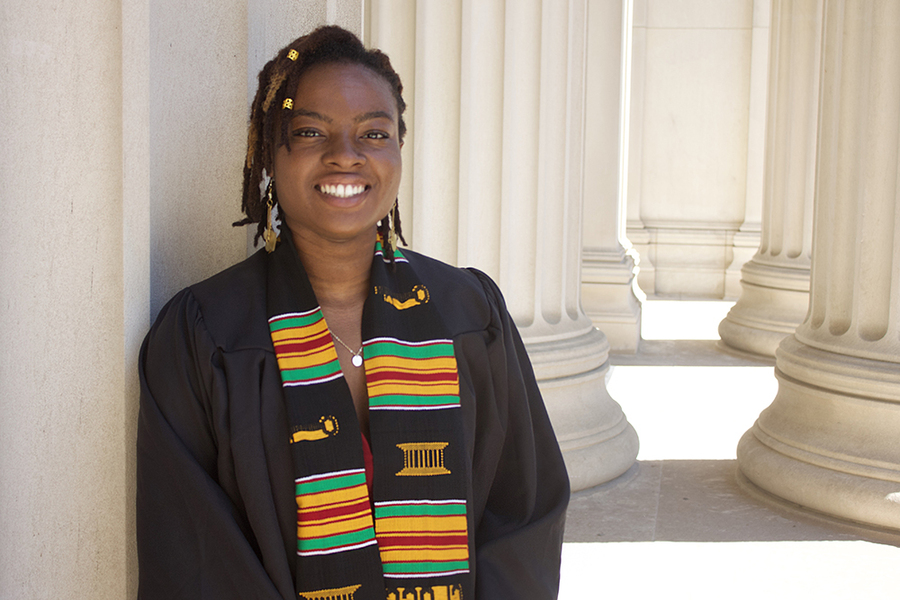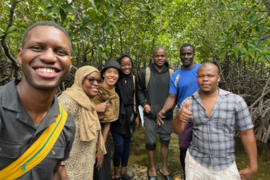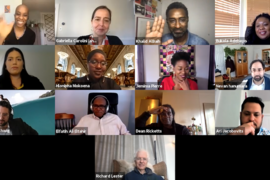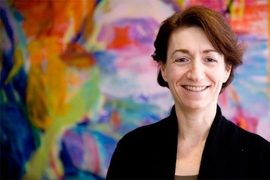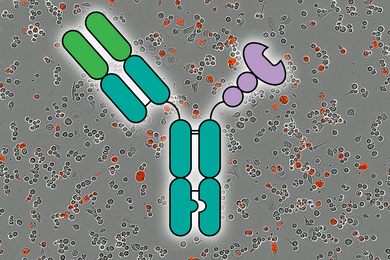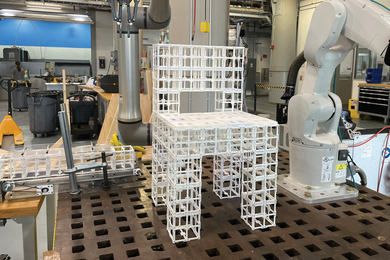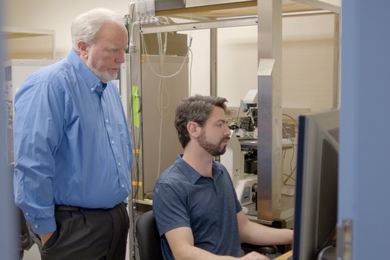Commencement 2022 marked a milestone in MIT’s history, as Stacy Godfreey-Igwe ’22 became the first student to graduate in African and African diaspora studies (AADS).
Godfreey-Igwe also majored in mechanical engineering and is now a fellow at the Science Technology Policy Institute in Washington. She recalls that while she did not initially intend to major in AADS, as the child of Nigerian immigrants she has long had a deep interest in her cultural and ethnic background. This interest, paired with her desire to create a social impact through engineering, led her to forge a new path at MIT.
“I originally came to MIT wanting to see if there were ways to do good with engineering,” Godfreey-Igwe reflects. “I found that maybe my way to enter into that would be in part understanding my cultural identity, and seeing what I could do from there.”
In 2020, Godfreey-Igwe sought advice from MIT's Danielle Wood about the potential for pursuing a double major with mechanical engineering. Wood, an assistant professor of media arts and sciences and of aeronautics and astronautics, had recently begun serving as the faculty advisor for African and African diaspora studies at MIT. When Godfreey-Igwe made the request, a formal major in AADS did not yet exist, although the minor and concentration were available. Wood helped Godfreey-Igwe complete a petition for a customized major in MIT’s School of Humanities, Arts and Social Sciences (SHASS). Inspired by Godfreey-Igwe’s request, Wood formally applied through SHASS to receive Institute approval to officially offer the major in AADS.
The request was approved in 2021, and MIT undergraduates now have the option to pursue a major, minor, or concentration in AADS. The program also collaborates with the MIT International Science and Technology Initiatives (MISTI) to offer opportunities for students to gain credit toward AADS while studying abroad at the University of Pretoria in South Africa.
Currently, approximately 15 MIT undergraduates are pursuing a concentration, minor, or major in AADS.
Wood says the major builds upon the foundation of the preexisting minor and concentration, the framework provided by other interdisciplinary majors, and the intellectual and pedagogical efforts of generations of scholars at MIT, including professors Michel DeGraff, Helen Elaine Lee, D. Fox Harrell, Kenneth Manning, Craig Steven Wilder, and Melissa Nobles. Wood took over as AADS faculty advisor after collaborating with Harrell (previous AADS faculty advisor) and DeGraff to co-instruct the gateway course for the major, 24.912 (Black Matters: Introduction to Black Studies).
“There was a long history of people before me who were involved with making this opportunity,” Wood says. “The AADS major thus represents a coming together of threads from across MIT’s schools and departments.”
The AADS major, minor, and concentration curriculum combines a broad exposure to the disciplines of history, arts, social science, and the humanities with opportunities to study comparatively across global contexts. Beyond the introductory subject and fourth-year thesis, the major requires training in a language relevant to people of Africa and its diasporas (including over 30 Indigenous African languages such as Igbo, Amharic, and Luganda, as well as Haitian Creole, French, Spanish, and Portuguese). In addition to language training, students complete elective subjects that span humanities, arts, social sciences, and history. They also complete a thesis on a topic of their choosing; Godfreey-Igwe, for example, used her thesis to study mass migrations from West Africa to Europe with Amah Edoh, a former faculty member in MIT’s Department of Anthropology. The findings of Godfreey-Igwe’s thesis coded interviews with migrants from West Africa to challenge traditional assumptions about motivations for migration.
The African and African diaspora studies major invites students from all backgrounds to explore the riches of culture, innovation, thought leadership, and beauty that originate in the continent of Africa and its many diasporas. The major also celebrates opportunities for students such as Godfreey-Igwe, whose identity includes African heritage, to enter a personal journey of self-discovery. The presence of the major adds to the well-rounded list of interdisciplinary offerings, including opportunities to learn about Latinx, Asian, American, Eurasia, and Medieval studies.
Wood says she's grateful to all the teams at MIT that made it possible to officially start the AADS major, adding she hopes it lays a foundation for the addition of further perspectives, such as Indigenous studies. She notes that Andrea Wirth, an academic administrator at MIT who passed away in 2022, was instrumental in establishing the AADS major concentration.
“The addition of the AADS major highlights an example of an institutional change that can tangibly contribute to living out the MIT Values of belonging and community, excellence and curiosity, openness and respect,” says Wood.
